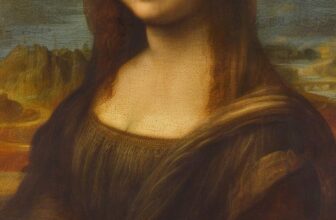
The Louvre Museum, located in the heart of Paris, France, is one of the world’s most renowned cultural institutions. Its reputation as a treasure trove of art and history attracts millions of visitors every year, eager to explore its vast collections. But how many artworks are displayed in the Louvre Museum? This seemingly simple question leads us to delve into the intricacies of the museum’s extensive holdings, its display strategies, and the stories behind the masterpieces that grace its halls.
The Size of the Collection
The Louvre’s collection is staggering in scope. The museum is home to approximately 480,000 pieces, encompassing paintings, sculptures, drawings, prints, and decorative arts. These works span a timeline of over 9,000 years, from prehistoric artifacts to contemporary art.
However, not all of these pieces are on display. Many are stored in the museum’s extensive archives and conservation facilities due to space constraints, preservation needs, or rotation schedules. The Louvre’s curators regularly rotate artworks to give visitors a fresh experience and to protect fragile items from overexposure to light and environmental conditions.
Artworks on Display
While the total number of items in the collection is close to half a million, only a fraction is displayed at any given time. Estimates suggest that around 35,000 artworks are exhibited across the museum’s 72,735 square meters of gallery space. These include iconic masterpieces, lesser-known gems, and historical artifacts from cultures around the globe.
The Masterpieces
Among the 35,000 artworks on display, some pieces are universally recognized and draw millions of visitors annually. These include:
- The Mona Lisa: Painted by Leonardo da Vinci, this enigmatic portrait is arguably the most famous painting in the world.
- The Venus de Milo: A stunning ancient Greek sculpture believed to represent Aphrodite, the goddess of love and beauty.
- The Winged Victory of Samothrace: A Hellenistic sculpture that exudes movement and grace, representing the goddess Nike.
- The Raft of the Medusa: A monumental painting by Théodore Géricault depicting a dramatic scene of survival and despair.
- The Coronation of Napoleon: Jacques-Louis David’s grand depiction of Napoleon Bonaparte’s self-coronation as Emperor of France.
Navigating the Louvre
The Louvre’s immense size and the diversity of its collection can be overwhelming. The museum is divided into eight main curatorial departments:
- Near Eastern Antiquities: Showcasing artifacts from Mesopotamia, Persia, and the Levant.
- Egyptian Antiquities: Home to mummies, sarcophagi, and hieroglyphic inscriptions from ancient Egypt.
- Greek, Etruscan, and Roman Antiquities: Featuring sculptures, pottery, and other artifacts from classical civilizations.
- Islamic Art: Displaying exquisite ceramics, textiles, and metalwork from Islamic cultures.
- Sculpture: Highlighting works from the medieval period to the 19th century.
- Decorative Arts: Encompassing items like furniture, ceramics, and tapestries.
- Paintings: Featuring works from the 13th century to 1848 by European artists.
- Prints and Drawings: Housing an impressive collection of works on paper.
Each department has its own dedicated galleries, offering visitors a focused journey through specific themes and eras. The museum’s layout also includes temporary exhibition spaces, where special displays provide fresh perspectives on art and history.
The Logistics of Display
Displaying 35,000 artworks is no small feat. The museum’s curators meticulously plan the arrangement of pieces to create a harmonious and educational experience for visitors. Factors such as thematic connections, historical context, and visual aesthetics are carefully considered.
Additionally, the Louvre prioritizes the preservation of its collection. Many artworks require controlled environments to prevent deterioration. For example, fragile paintings are displayed under specific lighting conditions and protected by climate-controlled casings.
Digital Access to the Collection
Recognizing the limitations of physical display, the Louvre has embraced digital technology to broaden access to its collection. The museum’s online database allows art enthusiasts to explore tens of thousands of pieces that are not currently on view. This initiative ensures that the public can engage with the museum’s treasures, regardless of their location.
Visiting the Louvre
For those planning a visit, the sheer number of artworks on display makes it nearly impossible to see everything in one day. Many visitors opt to focus on specific departments or famous masterpieces to make the most of their time. Guided tours and audio guides are available to help navigate the museum’s extensive offerings.
Tips for Exploring the Louvre
- Plan Ahead: Research the galleries and prioritize the artworks you’re most interested in.
- Start Early: Arrive when the museum opens to avoid crowds at popular exhibits.
- Wear Comfortable Shoes: The museum’s vast halls and staircases require significant walking.
- Take Breaks: Cafés and seating areas within the museum provide opportunities to rest and reflect.
The Cultural Impact of the Louvre
The Louvre’s collection transcends numbers; it represents the culmination of human creativity and cultural exchange. Each artwork tells a story, offering insights into the values, beliefs, and aspirations of the societies that created them.
The museum’s influence extends beyond its walls. As a global symbol of art and culture, the Louvre inspires countless artists, historians, and visitors. Its educational programs, research initiatives, and international collaborations further its mission to preserve and celebrate humanity’s artistic heritage.
So, how many artworks are displayed in the Louvre Museum? The answer is approximately 35,000, a fraction of its vast collection of 480,000 pieces. These works, spanning millennia and cultures, provide an unparalleled journey through the history of art and civilization.
Whether you’re admiring the Mona Lisa’s enigmatic smile, marveling at the grandeur of ancient sculptures, or exploring the digital archives, the Louvre offers a profound connection to humanity’s creative legacy. It’s a testament to the enduring power of art to inspire, educate, and unite people across the globe.





